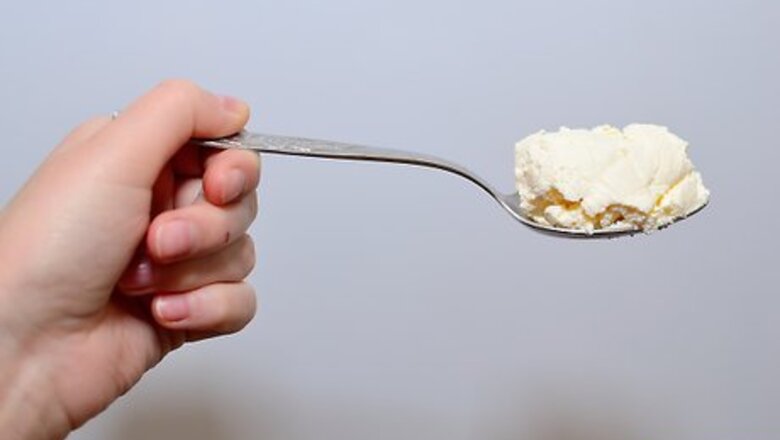
views
Draining Ricotta Thoroughly
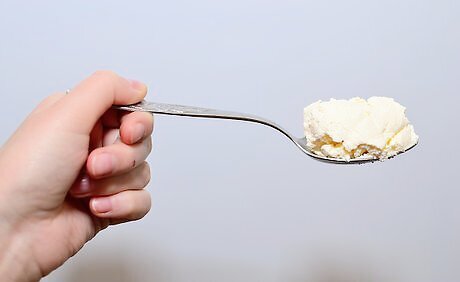
Use this method to drain freshly-made ricotta, or to prepare ricotta for use in recipes. If you make your own ricotta, you'll need to drain the liquid away once the hot ricotta has sat for fifteen minutes. You may also use this method to transform moist, cream-cheese consistency ricotta into a ricotta with firmer curds for use in cooking.
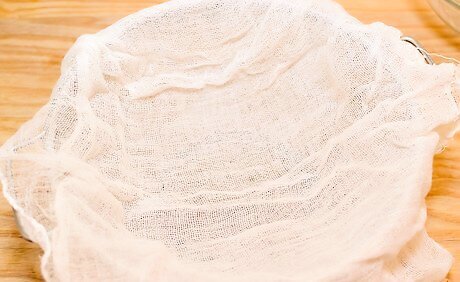
Line a strainer or colander with cheesecloth or paper towels. A fine mesh strainer may do the best job of draining thoroughly, but a colander will also work. Line the entire inside surface with cheesecloth, or another fine mesh cloth. Some people have even reported success with two layers of sturdy paper towels.
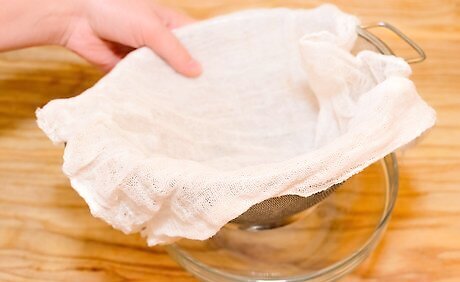
Place the strainer over a bowl. You'll need a bowl to catch the draining moisture from the ricotta. Find a bowl or soup plate that the strainer can stand on, or rest the strainer on the lip of a tall bowl. Don't use a setup where the strainer mesh is touching the base of the bowl, since this will keep the ricotta sitting in its own moisture.
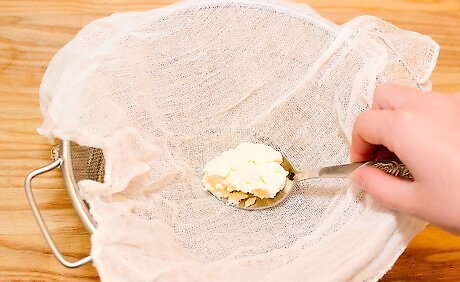
Spoon the ricotta atop the cheesecloth. Resist the temptation to pour or drop the ricotta in, since this will include all the liquid. Instead, spoon it in bit by bit, abandoning excess liquid at the bottom of the previous container.
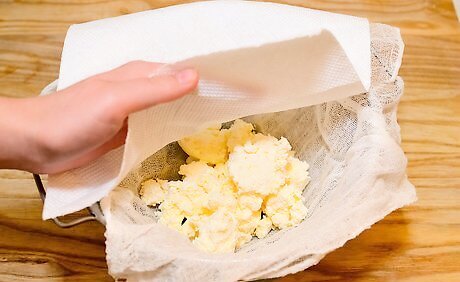
Cover the ricotta. Use any clean cloth or paper towel to cover the ricotta, or a plate that fits inside the strainer. Don't use a plate that rests on the strainer's lip, since the ricotta will need to be compressed as described below.
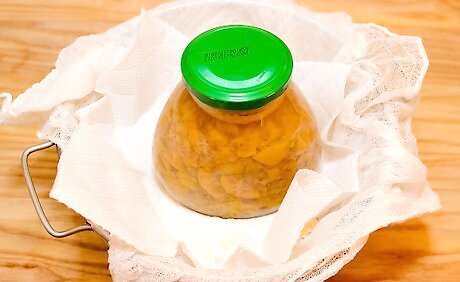
Place anything heavy over the setup. Compress the ricotta to help it drain by placing a heavy object on top of the cloth or plate resting on the ricotta. This could be a large can of food, a bag of stones, or any other reasonably clean object. If you cannot find anything suitable, press the ricotta down with a spoon for a minute or two instead.
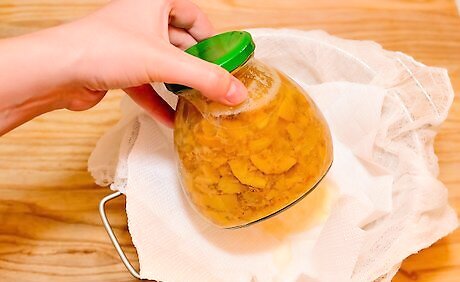
Time the draining according to intended use. Common ricotta draining times used in recipes vary from one to eight hours. Instead of following a single recipe's instructions every time, use these suggestions to get ricotta of various consistencies depending on your preference and intended use. Keep in mind that the following times are guidelines only, and will vary with each batch of ricotta and with the size of the cheesecloth's mesh: If eating plain, drain for five minutes to get a moist, spreadable ricotta, or until you reach a consistency you enjoy more. If cooking in moist, savory dishes, approximately twenty minutes should achieve a cottage cheese consistency, with small, moist curds. Lasagna, ravioli filling, or dips can be made with this ricotta. Ricotta for cannoli may require an additional ten minutes or more, to prevent the shells from becoming soggy. For most other purposes, drain from two to eight hours in the refrigerator. Pastries and baked goods in particularly use dry, crumbly ricotta to avoid ruining the texture of the dessert.
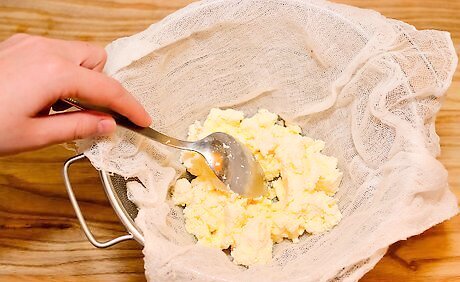
Stir the ricotta if it is slow to drain. Some batches of ricotta may be slow to drain due to variables in the cooking process. Speed these up by occasionally scraping the ricotta from the sides of the cheesecloth, allowing water to run through.
Draining Ricotta Quickly

Use this method to improve ricotta for eating, or when you urgently need to use ricotta. This method only takes a few minutes, but it may not thoroughly remove all the ricotta's moisture. It is not ideal for draining warm, just-made ricotta, but if your store-bought ricotta is soaked or dripping, this can quickly improve its texture and flavor before eating. This is also an acceptable, though not perfect, method for lasagna and other savory dishes, which do not require as much draining as ricotta used for pastries.
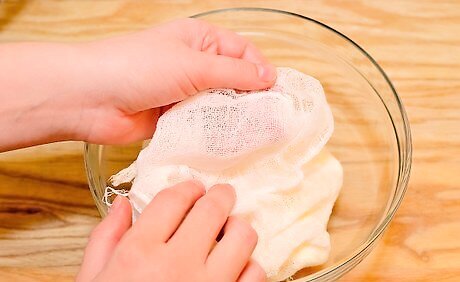
Lay two large pieces of cheesecloth or similar material over a bowl. Traditionally, ricotta is drained using heavy-duty, fine mesh cheesecloth. Fine-mesh nylon bags should also work, as will high quality men's handkerchiefs. If none of these are available, try a fine muslin or linen cloth or pillowcase, as long as it is freshly laundered.
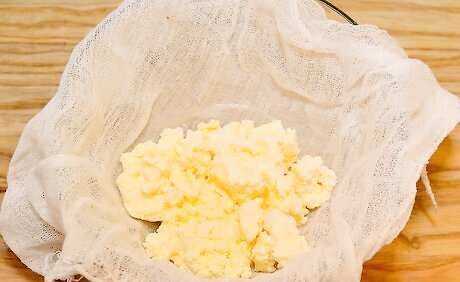
Spoon the ricotta onto the cloth. This method is more efficient than pouring or dropping the ricotta in, since liquid at the bottom of the ricotta container will not be added to the cloth.
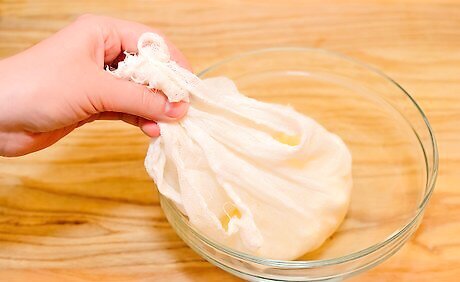
Wrap the cheesecloth around the ricotta. Lift the four corners of the cheesecloth and tie them together to form a bundle of ricotta. Alternatively, simply twist them together and keep a tight hold of them.
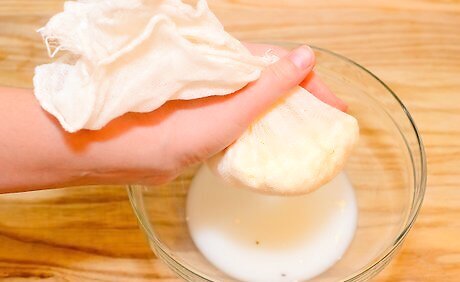
Squeeze the towel carefully. Squeeze firmly but slowly, working from the top of the bundle to prevent the ricotta from squirting out. Continue squeezing and gently shaking to remove as much water as possible.

Serve and eat. Ricotta that still has a somewhat moist, spreadable consistency is harder to use in recipes, although savory dishes such as lasagna are less affected by the extra moisture than pastry dishes. Better yet, serve this ricotta plain or with some of these additions: Atop crostini or toast Mixed with finely chopped tomatoes and Italian herbs, as a dip Topped with a drizzle of olive oil and a pinch of salt Sprinkled with honey or nuts as a dessert




















Comments
0 comment